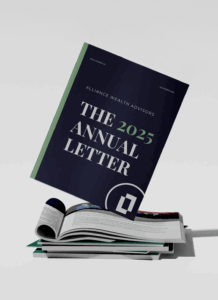
Rebalancing Your Portfolio
Investment ManagementJan 14, 2025
There are many buzzwords or phrases that relate to financial planning and investment management. Financial Advisors throw these phrases around during conversations with clients assuming the clients know what they mean. However, we have found that many investors don’t fully understand them and would appreciate further explanation on some of these topics. Rebalancing is one of them.
Simply put, rebalancing a portfolio is selling your winners and buying your losers. You may be wondering why one would do such a thing. The reality of it is that most investors want to keep buying their winners. Unfortunately, that strategy rarely ends well. Trends change. The leaders of certain time periods eventually become laggards. Conversely, laggards become leaders. If we knew how long a trend would last and when a new trend would begin, portfolio management would be easy. Unfortunately, nobody has a crystal ball to time the market.
Rebalancing periodically is a disciplined approach that takes the emotion out of investment decisions. It is a critical part of managing the risk you are taking in your portfolio. Think about it for a second. Let’s assume that you and your advisor determine that your risk tolerance calls for a portfolio that has stock exposure in the neighborhood of 70%. In theory, the stock portion of your portfolio should grow faster over time. Without rebalancing, that 70% will eventually turn into 80% and beyond. If and when a major market correction occurs, you are going to experience more volatility than you may have expected when you and your advisor constructed your portfolio. Another example is your portfolio becoming more heavily weighted towards bonds after a downturn in the stock side. If and when the recovery happens, you could potentially be underinvested in stocks.
Most investors are looking to grow their money over the long term within the risk parameters that they are comfortable with. It is up to the people they trust to manage their money to have practices in place to achieve returns while managing the risk. Rebalancing is an important part of the process. While it may seem counterintuitive to sell the hot fund and buy the cold fund in the short run, the discipline will pay off over time.


